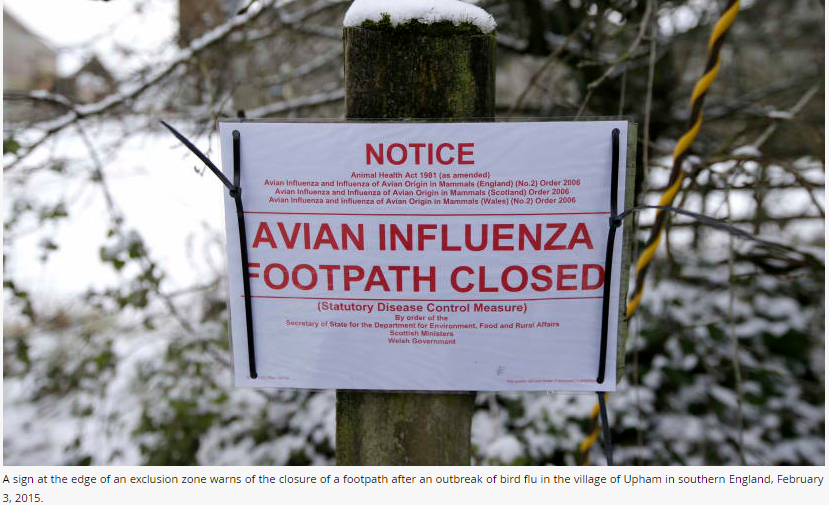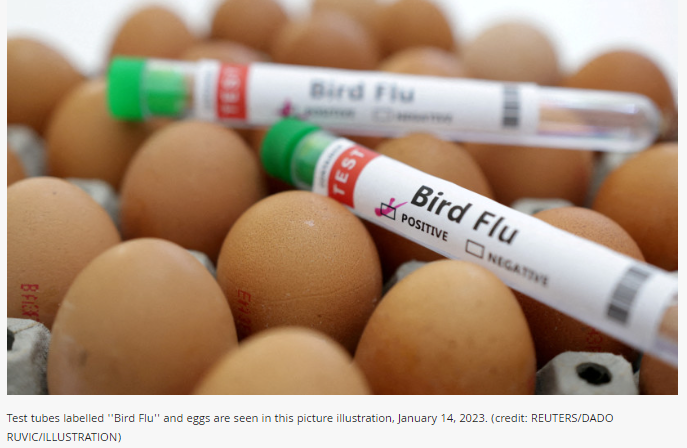WHO warns bird flu 'significant concern' as virus spreads between cows

WHO warns bird flu 'significant concern' as virus spreads between cows
By TZVI JOFFRE

The World Health Organization warned on Thursday that the ongoing spread of the bird flu among both birds and mammals around the world is a "significant public health concern."
The H5N1 subvariant of bird flu has been increasingly reported in cattle in recent weeks, with 32 cases reported in eight states since March 25.
Earlier this month, a person who had exposure to infected cows in Texas was found to be infected with the H5N1 subtype, with conjunctivitis being their only symptom. The infected person was treated with a flu antiviral drug and recovered. Dr. Jeremy Farrar, chief scientist at the WHO, explained on Thursday that the great concern is that as the bird flu has spread around the world in both birds and mammals in the past two years, it could eventually evolve and develop the ability to infect humans and eventually the ability to pass between humans.
“Do the milking structures of cows create aerosols? Is it the environment which they’re living in? Is it the transport system that is spreading this around the country?" said Farrar. "This is a huge concern and I think we have to…make sure that if H5N1 did come across to humans with human-to-human transmission that we were in a position to immediately respond with access equitably to vaccines, therapeutics, and diagnostics.”

Farrar expressed concerns that vaccine development for the bird flu was "not where we need to be."
The WHO scientist added that the virus "is just looking for new, novel hosts" and that its spread among mammals brings it closer to humans, according to The Guardian. Farrar called for increased monitoring, stressing that it's important to understand how many human infections are happening in order to keep track of potential adaptations by the virus.
Bird flu appears to be spreading between cows, from cows back to birds
The US Department of Agriculture's (USDA) Animal and Plant Health Inspection Service (APHIS) updated on Tuesday that while wild migratory birds are believed to be the original source of the outbreaks among cattle, there is evidence of some cases where it appears the virus spread between cows and from cows back to birds.
Analyses of viruses found in the cows have so far not found any changes affiliated with transmission between people. The USDA added that it remains unclear exactly how the virus is spreading between cows, although respiratory-related samples did not include significant concentrations of the virus, indicating that respiratory transmission is likely not the main way it's being spread.
The WHO reported on Friday that the bird flu had been detected in very high concentrations in raw milk from infected animals, although it remains unclear how long the virus can survive in milk.
WHO: Bird flu may be spreading in new ways
Wenqing Zhang, head of the global influenza program at the WHO, told reporters that the fact the virus was now spreading from cows to humans, between cows, and between cows and birds suggests that "the virus may have found other routes of transition than we previously understood."
The US Centers for Disease Control and Prevention (CDC) updated on Friday that tests had found that the H5N1 virus that infected a person in Texas earlier this month could be treated with antiviral medications used for seasonal flu.
Additionally, some preliminary analyses have shown that two candidate vaccines for the bird flu could offer protection against the virus found in the infected person.
CDC believes risk to humans still low
The CDC added that this is a "rapidly changing, emerging situation," but stressed that it still believes that the risk to humans is low.
Health officials from the CDC and the WHO have stressed the importance of not consuming raw milk. Pasteurization should kill any bird flu viruses present in dairy products.
